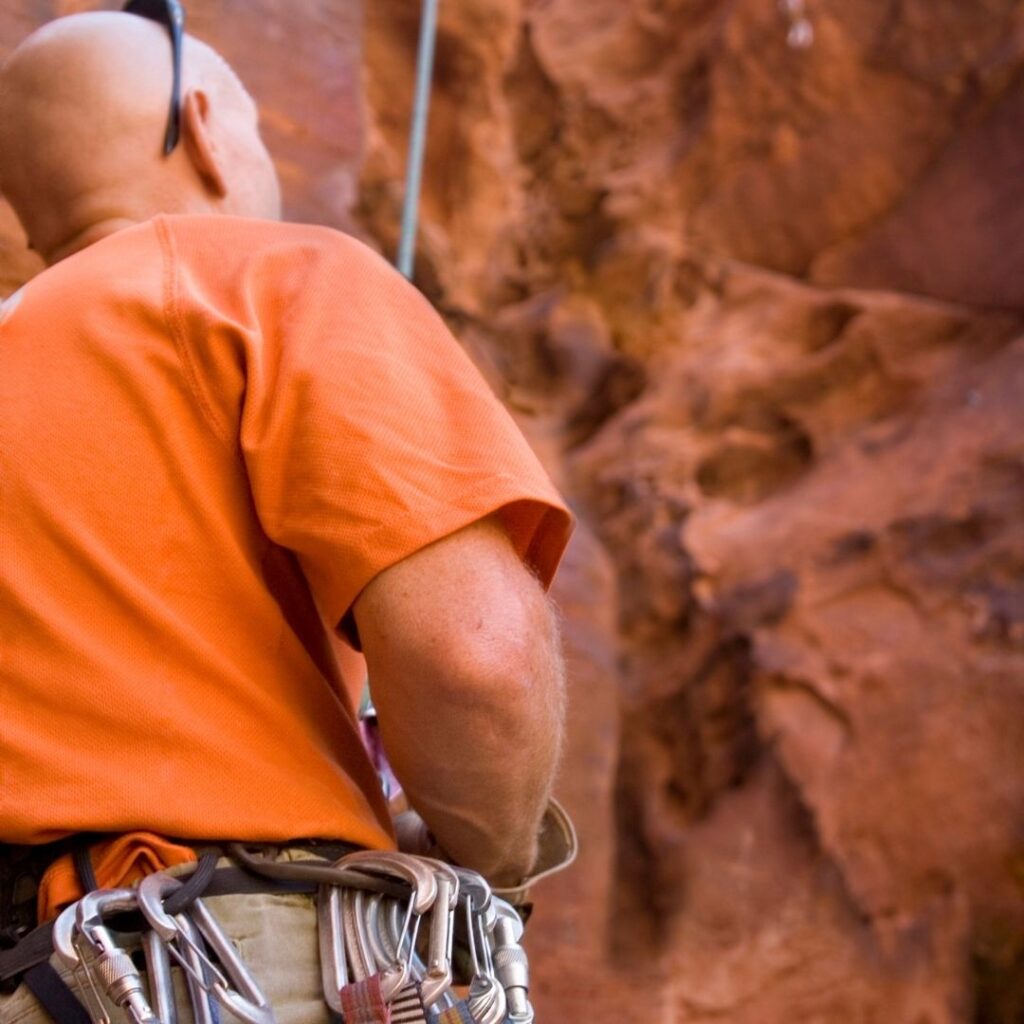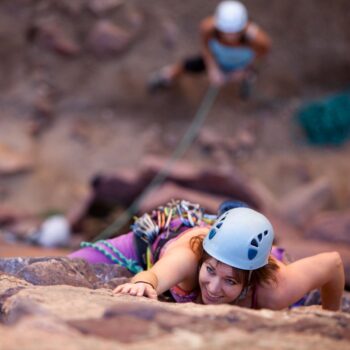Belay Commands: Master Effective Belay Communication
Table of Contents
Belay Communication
Rock climbing is not just a physical endeavor. It’s a dance of trust, coordination, and communication between climbers and belayers. At the core of this partnership lies belay communication – a system of belay commands and responses that ensure the safety and success of every ascent.
In this article, we will go through the fundamental belay commands that initiate a climb to the instructions needed to create a safe, efficient, and enjoyable ascent. Learn all you need to know about mastering belay commands below.
Who is a belayer?
A belayer is the individual responsible for managing the safety rope system for a climber. They control the rope’s tension, arrest falls, and ensure the climber’s safety by using specialized belay devices and techniques.
What are the fundamental belay commands?
Communication is key. Be loud, clear, and consise to avoid miscommunication between the climber and the belayer. Miscommunication can be as consequential as any other type of climbing-system failure.
Pro Tip: Review commands with you and your climbing partner before a climb to make sure there are no misunderstandings.
Here are the fundamental belay commands:

Climber: “On belay?” Belayer: “Belay on.”
This classic exchange signifies readiness. When the climber utters “On belay,” it indicates they are prepared to climb, are requesting to climb, and checking if the belayer is ready to take control of the rope. The belayer’s response “Belay on” confirms their readiness to manage the rope.
Climber: “Climbing.” Belayer: “Climb on.”
This belay command indicates the climber’s intention to commence the ascent. By saying “Climbing,” the climber signals to the belayer that they are starting the climb, prompting the belayer to ensure proper rope tension and attentiveness. The belayer confirms that the climber can start climbing, with “Climb on.”
Climber: “Slack!”
When the climber needs more rope to navigate a particular move or reach a hold, they call out “Slack!” This command prompts the belayer to feed out additional rope (a little), allowing the climber to move freely without restriction. The belayer should pause after paying out rope to see if the climber asks again for additional rope.
Climber: “Tension/Take.”
Used interchangeably, these belay commands signal the belayer to remove slack from the rope and apply tension to provide support to the climber. “Take” is typically used when the climber is preparing to make a move or requires tension to prevent a fall, while “Tension” indicates the need for continuous support through a challenging section. Either way, the belayer should remove all slack and hold tight.
Pro Tip: Some climbers argue that using “tension” is better than using “take” because “take” can be misheard as “slack,” and confusing those commands would be dangerous.
Climber: “Up rope.”
The climber can use the command “Up rope” at any point during a climb to tell the belayer to pull in rope slack. The belayer should then take in a little slack, then pause to see if the climber requires more slack to be pulled in again.
Climber: “Ready to lower.” Belayer: “Lowering.”
When the climber reaches the top of the route or decides to descend, they use the command “Ready to lower” to signal to the belayer to lower them to the ground. The belayer will respond with “Lowering” and begin initiating the controlled descent process.
Climber: “Off belay.” Belayer: “Belay off.”
At the conclusion of the climb, the climber can say “Off belay” to signal to the belayer to release tension on the rope. This command indicates that the climber is safely anchored or on solid ground and no longer requires belay support. “Belay off” inidicates that the belayer has stopped belaying the climber.
Additional Useful Belay Commands
- “Falling/Fall”: This command is used by the climber to alert the belayer of an impending fall. Upon hearing this command, the belayer must be prepared to quickly arrest the fall by applying proper braking techniques.
- “Watch Me”: This belay command is employed when the climber wants the belayer to pay close attention to their movements. It may indicate a challenging section or a potential hazard where extra vigilance from the belayer is required.
- “Rock/Rock Below”: Loose rocks or debris pose a significant risk to climbers below. The command “Rock” or “Rock Below” serves as a warning from the climber to the belayer, prompting them to take cover and avoid potential injury from falling objects.
- “Resting”: Sometimes climbers need to pause or take a rest to regain energy. “Resting” is used to inform the belayer that the climber is taking a break and does not require tension on the rope.
- Use Names: Sometimes you may need to use your partner’s name before saying a belay command. In a crowded crag or a busy gym, voices can be hard to distinguish from one another. By including a name, it can help distinguish your command and improve effective communication beteen you and your climbing partner.





